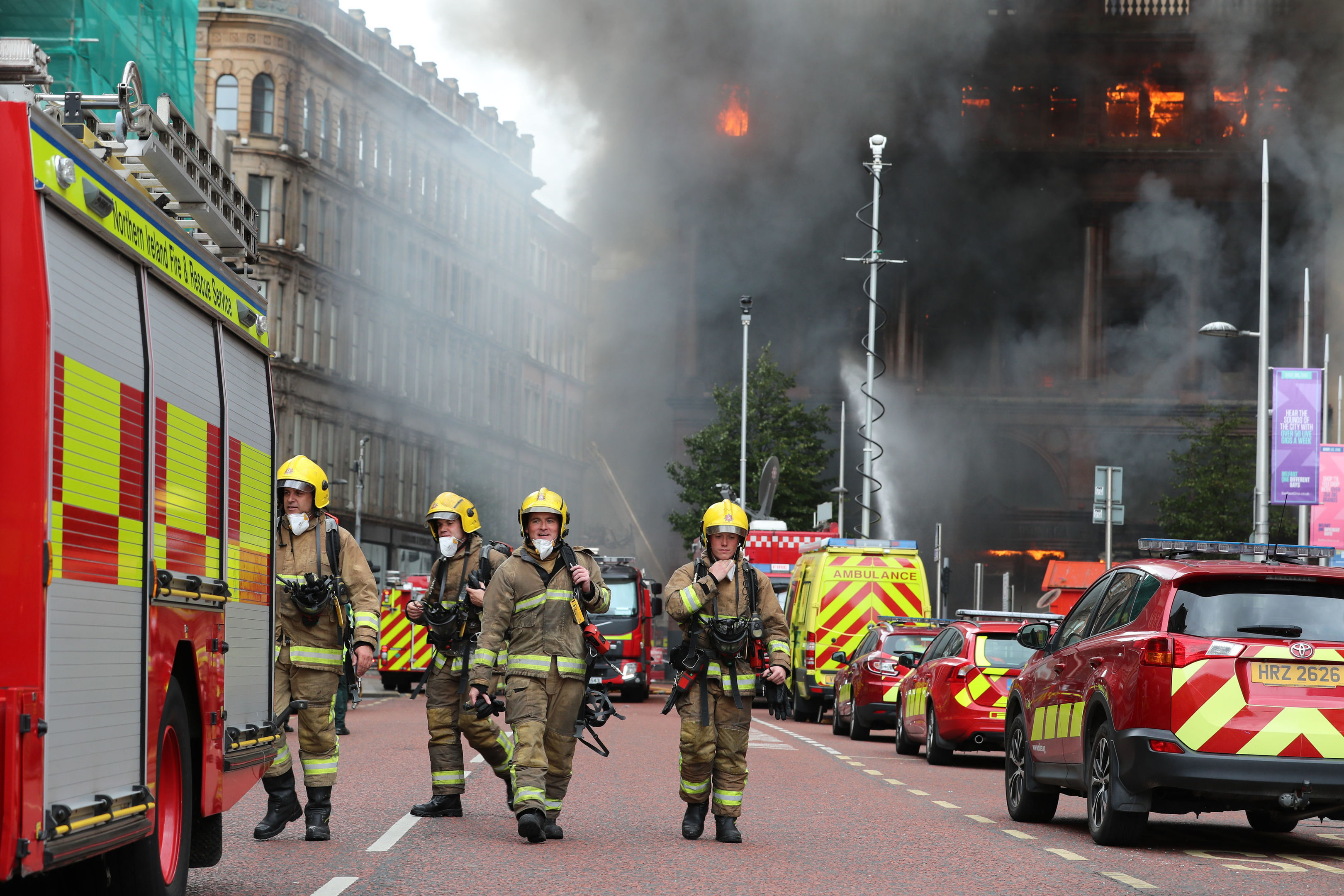
Firefighters fear they are at increased risk of cancer because so many rural stations are without running water.
Their inability to shower quickly after returning from fires means they cannot properly clean cancer- causing chemicals, released during fires, on their clothes and skin.
The International Agency for Research on Cancer, a World Health Organisation body, ruled firefighting as one of the most dangerous occupations because of exposure to carcinogenic substances, with firefighters suffering higher than average cancer rates.
Scottish firefighters fear their cancer risk could be even higher than elsewhere because so many stations are in remote countryside areas and have inadequate facilities to fully decontaminate, which requires showering and a full change of clothing within an hour of exposure.
At least 11 of those stations do not have running water. Scottish Fire & Rescue chiefs have issued crews with “decontamination wipes”, which union bosses say are inadequate given emerging evidence of risks.
Fire Brigade Union Scottish secretary John McKenzie said: “Many rural stations have inadequate facilities and, as a result, we believe exposure has been an unacceptable and avoidable risk not only to the health and safety of our firefighters, but also to their families.
“While we welcome the introduction of wipes, we do not believe they are nearly enough to protect our members who have been dealing with an unprecedented number of wildfires due to climate change. That means firefighters attending wildfires in the same remote areas where stations don’t have basic facilities such as running water. That means there is nowhere within the workplace for firefighters to fully decontaminate, shower and change within an hour of leaving a call-out.
“In the worst cases where there is a lack running water supplies, our members are getting back into their own vehicles to travel home, risking taking with them whatever carcinogenic material they may have picked up on the job.
“We fear that has meant family cars being contaminated, and any clothing brought home risks impacting the health of families in much the same way asbestos did when it was brought home by workers years ago.”
Firefighters say budget restraints since Scotland’s single fire service was established have not only led to the loss of about 1,000 fewer full-time and retained firefighters, but the fabric of many buildings and the standard of facilities at stations have also plummeted.
“Some of our older stations are being held up with internal scaffolding it’s got so bad,” said McKenzie. “Some of the worst staffing shortages are in rural areas where terms and conditions have made it increasingly difficult to recruit retained firefighters, so full-time firefighters are increasingly having to step in.”
Stations without running water include Colintraive, Cromarty, Foyers, Glenelg, Kerrera Marina, Lybster, North Ronaldsay, Ratagan, Salan, Seil and Staffin.
FBU Scotland health and safety officer Barry Johnstone said: “Our members put their own lives on the line every single time they attend a call-out, so to expect them to also expose themselves to avoidable risks such as carcinogenic material without providing the full facilities to properly allow full decontamination protocol is simply unacceptable.”
Cancers of the bladder and mesothelioma have been identified by research teams, as well as positive associations with cancers of the colon and prostate, and for melanoma and non-Hodgkin lymphoma. Cancer and disease registers as well as tougher decontamination protocols are being established.
Professor Anna Stec of Lancaster University, one of the world’s leading experts on exposure to toxic chemicals, warned: “Our firefighters are frequently exposed to high levels of toxic chemicals during and after a fire. As one of the contributory researchers, I found firefighters are frequently exposed to carcinogens that can have a serious impact on health.
“Members of parliament must call for an urgent debate on firefighter health and cancer rates so we can support those who work to save our lives.”
Liz Barnes, Scottish Fire and Rescue Service (SFRS) director of people and organisational development, said: “Through our Contaminants Group, we have already taken steps to minimise risk as far as possible. This includes a substantial review of how fire appliances, personnel and PPE are decontaminated during and following an incident.
“Personnel who may have been exposed to contaminants are encouraged to shower as quickly as possible upon return to station grounds and to safely store PPE for specialist cleaning.
“All existing SFRS buildings have now been audited and reviewed against new design with site-specific control measures to be implemented to minimise contamination. We recognise there are limited welfare facilities at a small number of fire stations across the country and we continue to work to address this.
“Steps taken to mitigate risk include supplying all SFRS appliances and training centres with specialist decontamination wipes and the trial of station zoning systems to limit potential spread. We will continue to explore other steps to minimise risk to our staff.”

Enjoy the convenience of having The Sunday Post delivered as a digital ePaper straight to your smartphone, tablet or computer.
Subscribe for only £5.49 a month and enjoy all the benefits of the printed paper as a digital replica.
Subscribe